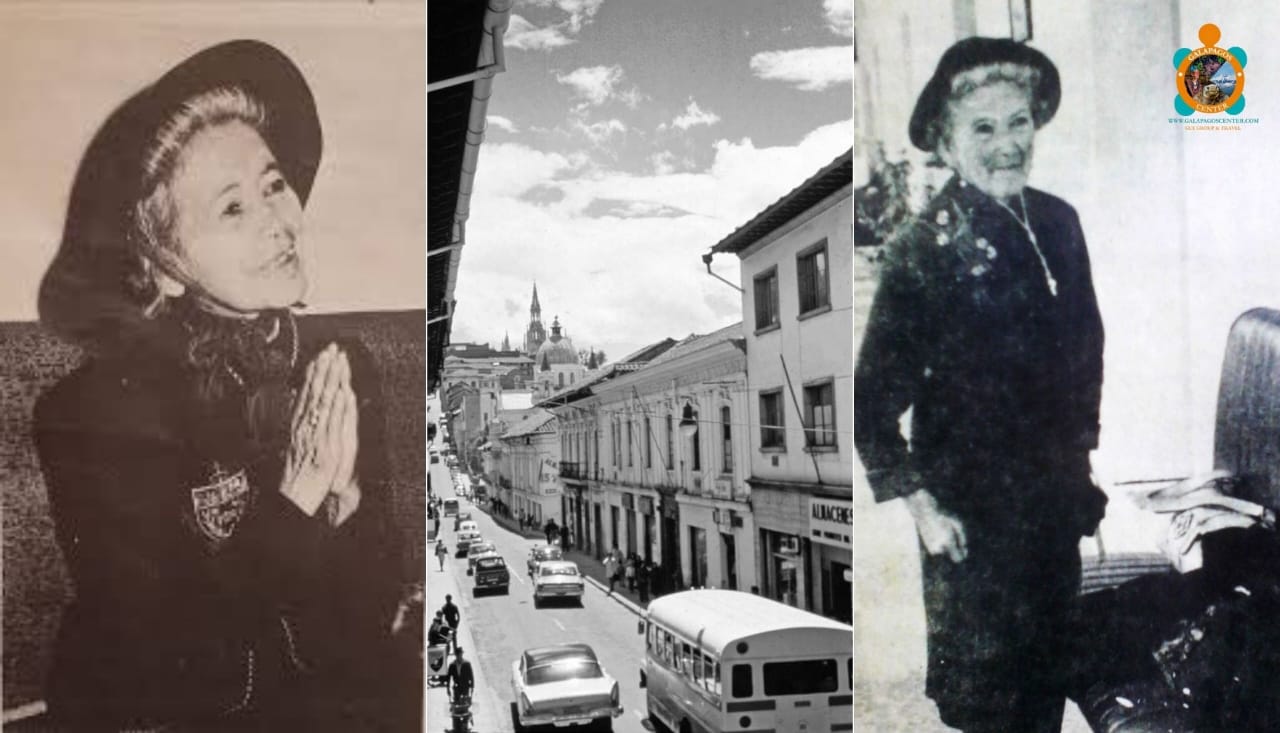
Ana Bermeo: La Torera, Icon of Quito’s Urban Legend
La Torera was the nickname by which Ana Bermeo was known, a rather famous lady in the city of Quito between the 1950s and 1980s.
Let’s delve into her origins and story. Ana Bermeo was born in Baños de Agua Santa, in the province of Tungurahua, at the end of the 19th century, she moved at a very young age to the city of Quito with her mother.
Bermeo worked as a seamstress at the textile factory, La Internacional. This trade, which she unknowingly turned into her destiny, sparked her passion for fashion, lace, hats, and everything that symbolized feminine elegance. She became a walking style icon, known for her extravagant outfits: a hat with a veil, gloves, red stockings, high heels, a cane or umbrella, heavy makeup that made her impossible to ignore, and a whistle hanging from her chest, which she used to direct traffic in the noisy city.
But why “La Torera”?
This nickname arose spontaneously. It is said that she attended parades, carnivals, and public events dressed as a bullfighter, and was admired during the festivities for her unmatched energy.
Ana walked through the streets of Quito with a cane and a defiant attitude. When someone tried to mock her, she would “fight back” by raising her cane or umbrella and shouting back with strong authority. Considering she lived in a conservative era, her unusual and bold presence as a woman stirred both controversy and admiration.
Many believed that Bermeo suffered from a mental condition, while others thought her behavior was a form of resistance and personal freedom. Her love life also added to her legend—rumors spoke of a broken heart caused by a torero from Ambato. She even claimed to be the owner and lady of the city. True or not, Bermeo turned her pain into an unrepeatable character.
In her later years, Bermeo was welcomed at the Corazón de María asylum in Cotocollao, where she was still allowed to walk the streets of Quito in her signature attire. Sadly, in 1984, she passed away at an old age after suffering a fall that fractured her leg. She was buried in the Cementerio del Batán.
Today, Ana Bermeo is more than just a curious anecdote—she represents women who dared to defy the rules and be who they wanted to be. She has become one of the most representative characters of the city of Quito, inspiring theater productions in 2013 and 2016, reminding us that her memory is still alive in the urban culture of the capital.
Her story may not be written in school books, but it lives on in the memories of those who saw her walk by.}
By: VQ




